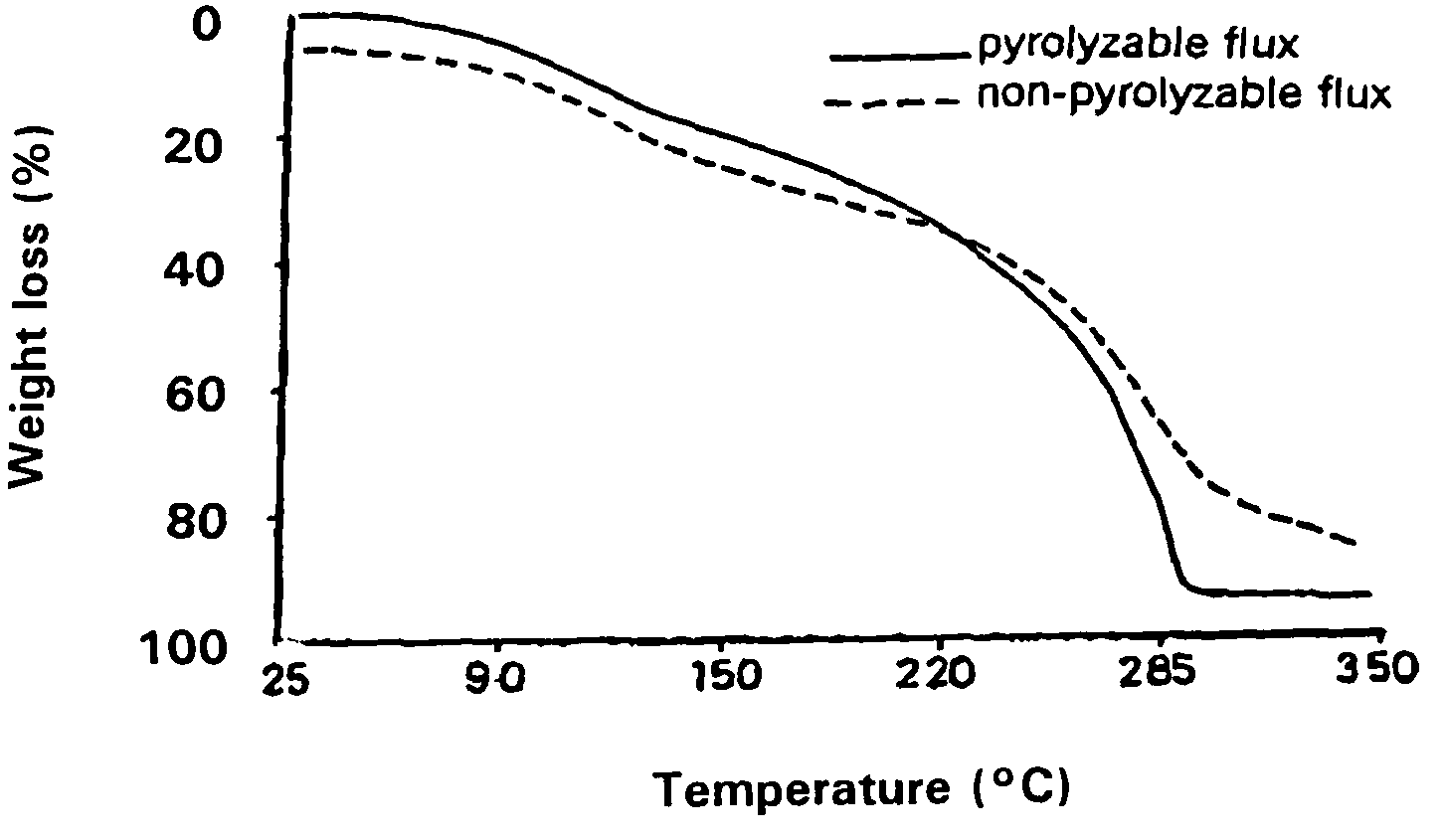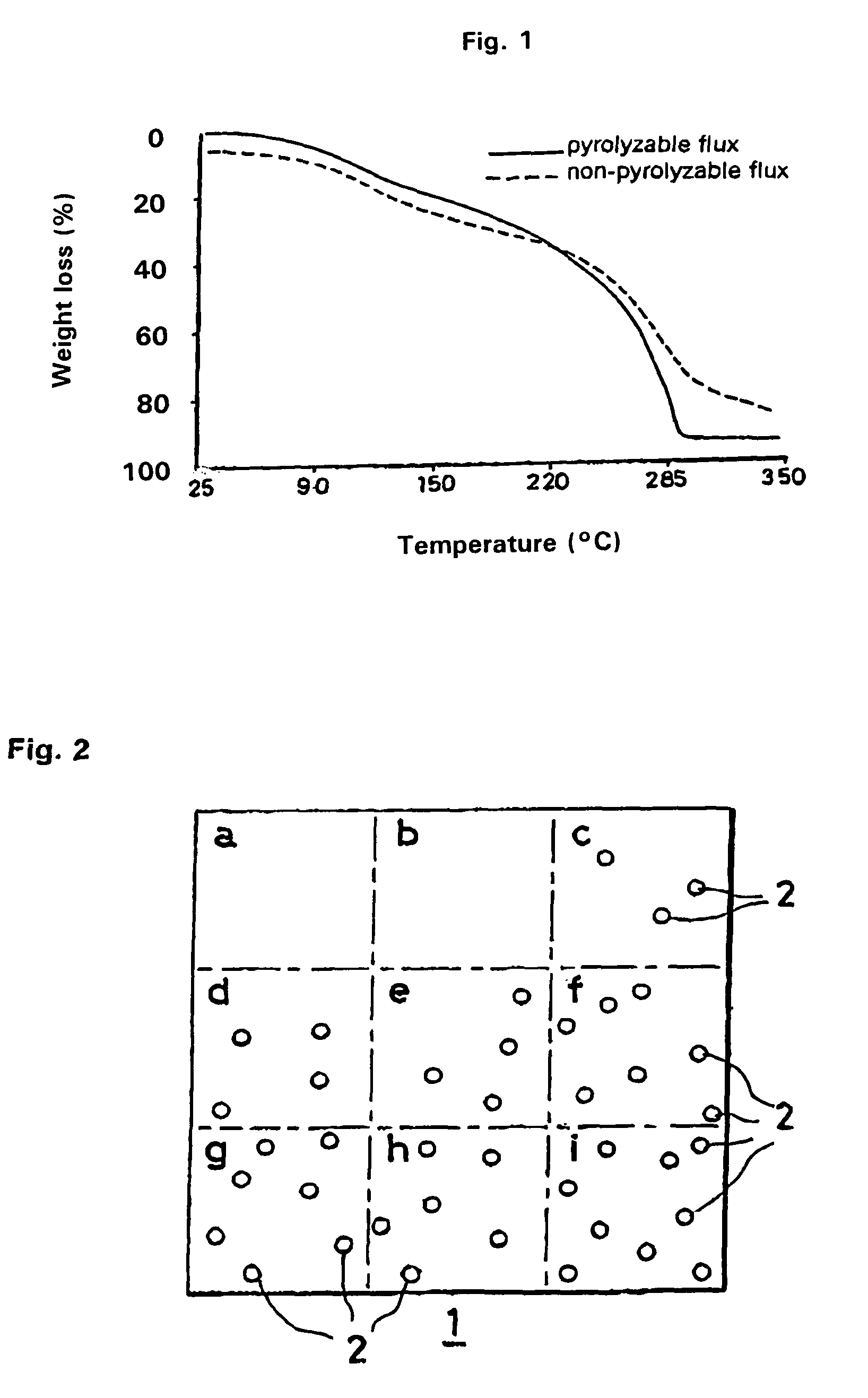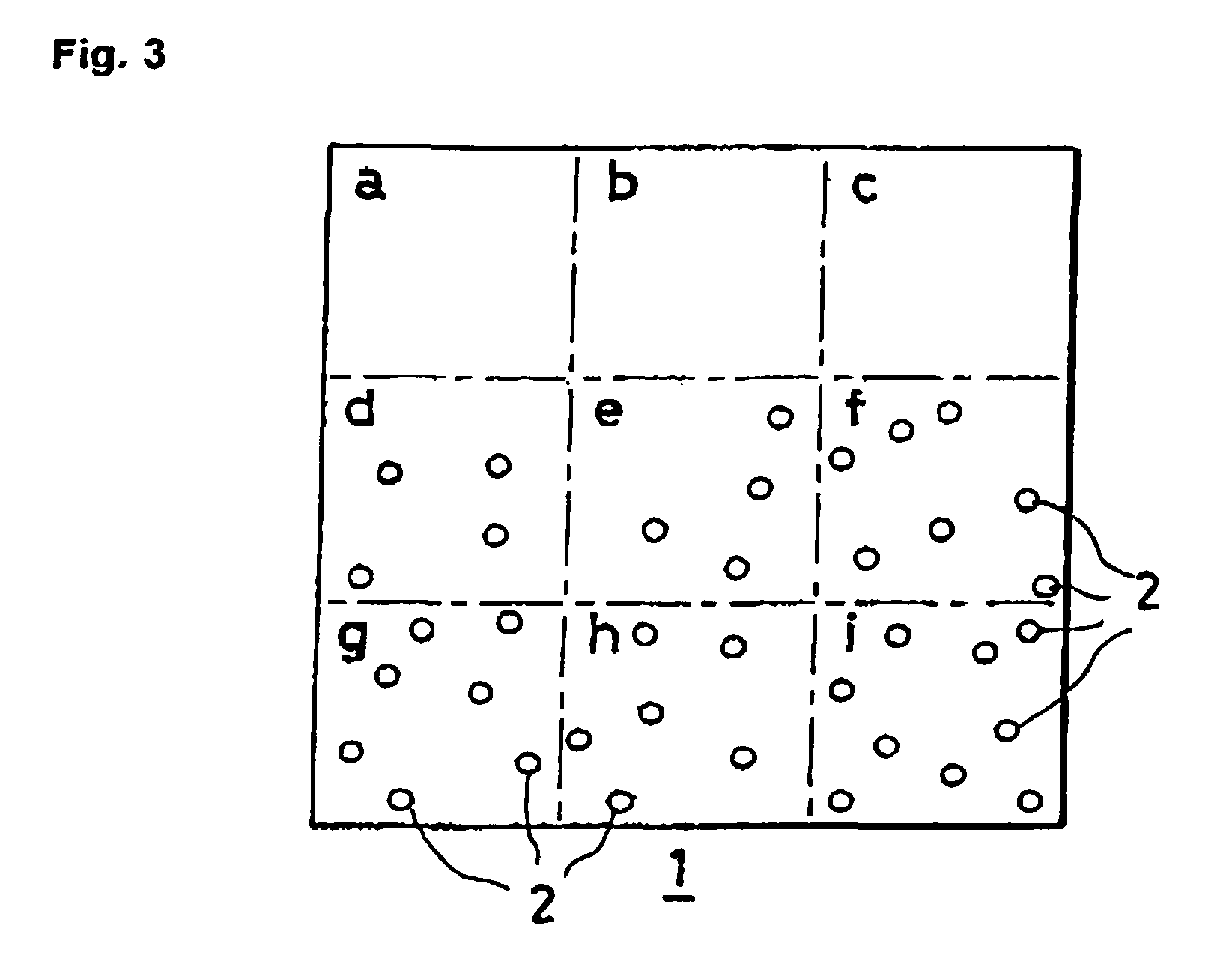Solder preform and a process for its manufacture
a technology of preform and mold, applied in the field of preform, can solve the problems of voids and fluxes
- Summary
- Abstract
- Description
- Claims
- Application Information
AI Technical Summary
Benefits of technology
Problems solved by technology
Method used
Image
Examples
example 1
[0072]Solder preforms were prepared by the following steps (1)-(6).
[0073](1) Ni particles with a diameter of 50 μm were washed with dilute hydrochloric acid to clean their surfaces, and 4.5 grams of the Ni particles which had their surfaces cleaned were mixed with 0.45 grams of a pyrolyzable liquid flux having the following composition to obtain a mixture.
[0074]The composition of the liquid flux used at this time was as follows. Its weight loss at 285° C. was 80% on a heating weight loss curve obtained by TG.[0075]60.0 mass percent of rosin (hydrogenated rosin),[0076]10.0 mass percent of activator (diethylaniline HBr), and[0077]30.0 mass percent of solvent (ethylene glycol monoethyl ether).
[0078](2) The mixture was charged into 125 g of a Sn—Cu—Ni—P based lead-free solder (melting point of approximately 230° C.) comprising 99 mass percent of Sn and a remainder of Cu, Ni, and a minute amount of P which had been melted at approximately 285° C. in a cast iron ladle, and the molten sold...
example 2
[0083]Solder preforms were prepared by the following steps (1)-(6).
[0084](1) Ni particles with a diameter of 50 / m were washed with dilute hydrochloric acid to clean their surfaces, and 4.5 g of the Ni particles with cleaned surfaces were mixed with 0.45 g of a pyrolyzable liquid flux having the following composition to obtain a mixture.
[0085]The flux composition used in this example was as follows. Its weight loss at 285° C. was 80% on a heating weight loss curve obtained by TG.[0086]60.0 mass percent of rosin (hydrogenated rosin),[0087]10.0 mass percent of activator (diethylaniline HBr), and[0088]30.0 mass percent of solvent (ethylene glycol monoethyl ether).
[0089](2) The mixture was charged into 125 g of a Sn—Ag—Cu based lead-free solder (melting point of approximately 220° C.) which had been melted at 285° C. in a crucible, and after stirring was performed for approximately 20 seconds with a metal spatula, the crucible was left in a vacuum apparatus for approximately 3 minutes to...
PUM
| Property | Measurement | Unit |
|---|---|---|
| diameter | aaaaa | aaaaa |
| particle diameter | aaaaa | aaaaa |
| particle diameter | aaaaa | aaaaa |
Abstract
Description
Claims
Application Information
 Login to View More
Login to View More - R&D
- Intellectual Property
- Life Sciences
- Materials
- Tech Scout
- Unparalleled Data Quality
- Higher Quality Content
- 60% Fewer Hallucinations
Browse by: Latest US Patents, China's latest patents, Technical Efficacy Thesaurus, Application Domain, Technology Topic, Popular Technical Reports.
© 2025 PatSnap. All rights reserved.Legal|Privacy policy|Modern Slavery Act Transparency Statement|Sitemap|About US| Contact US: help@patsnap.com



